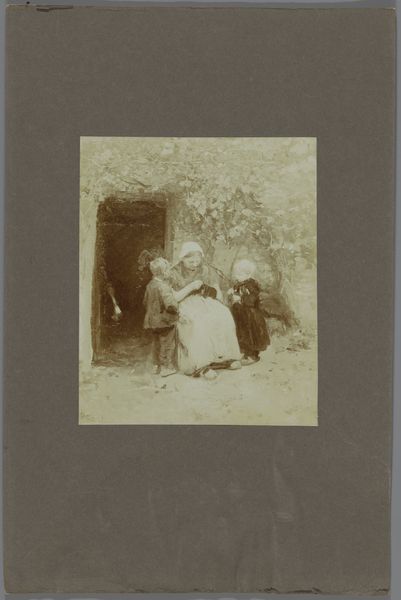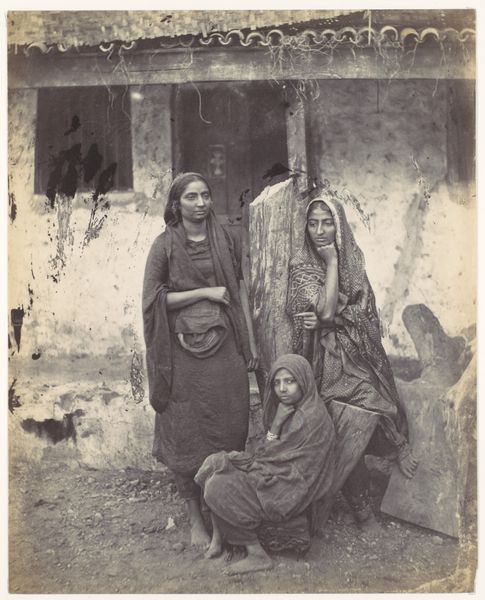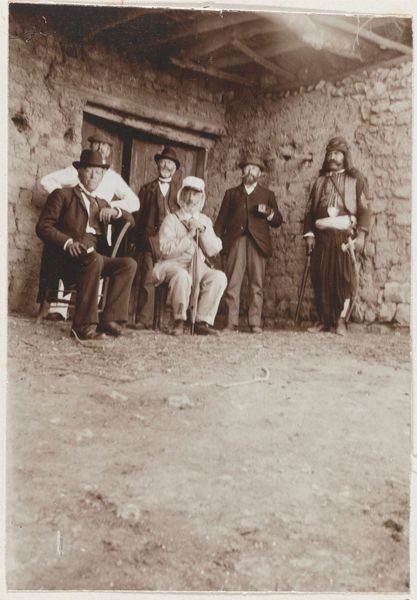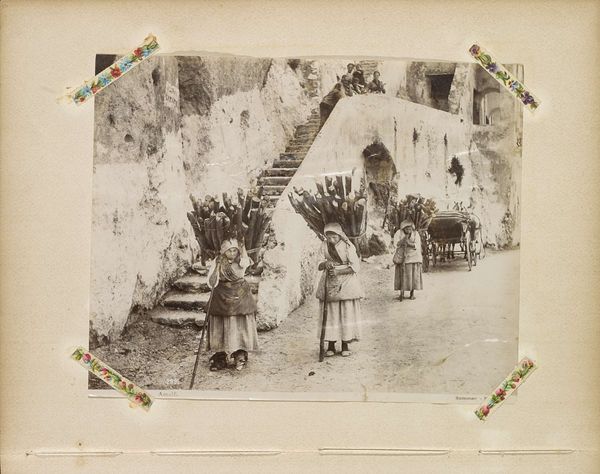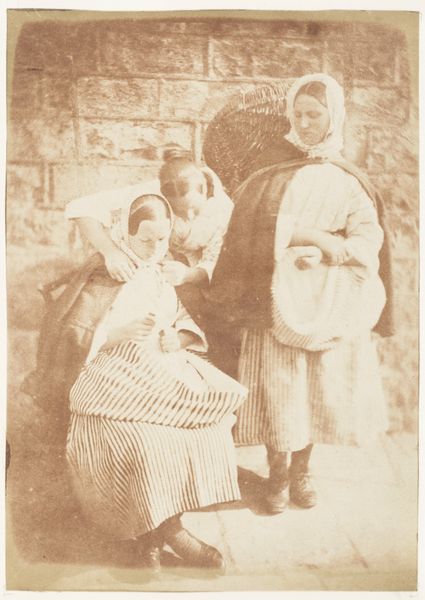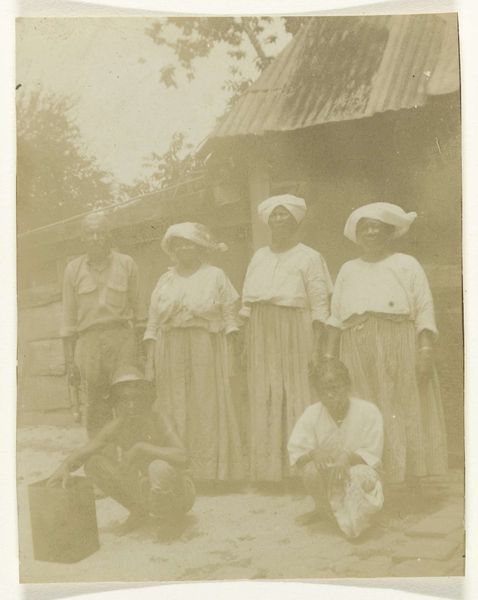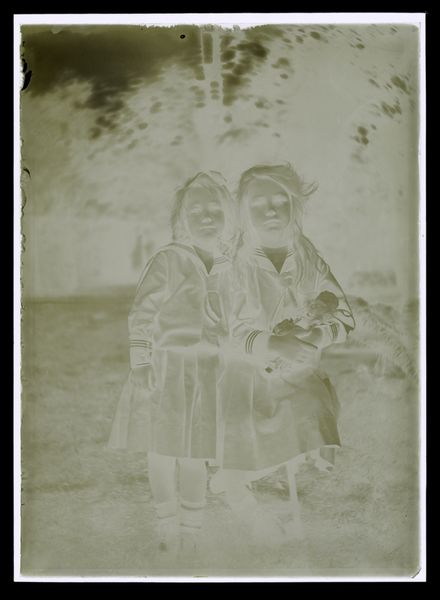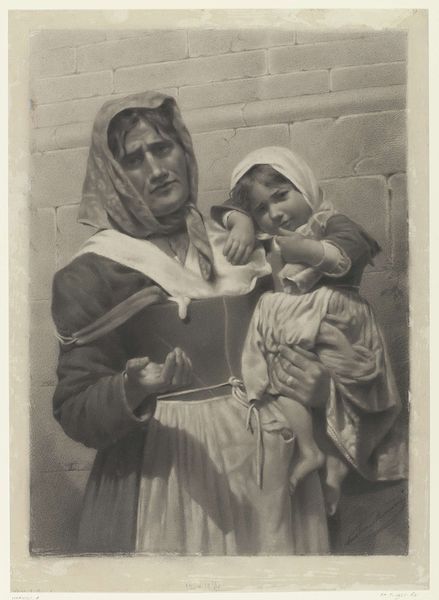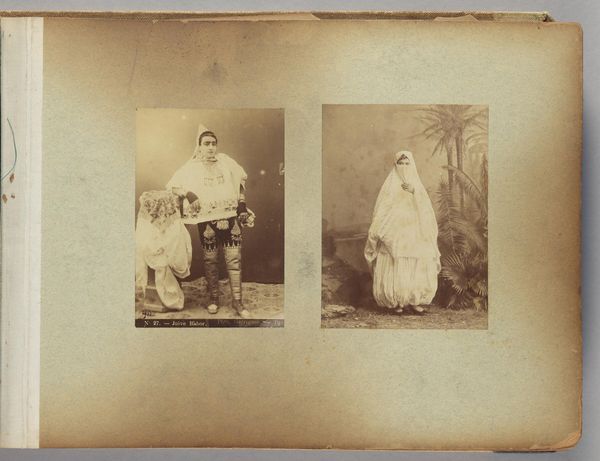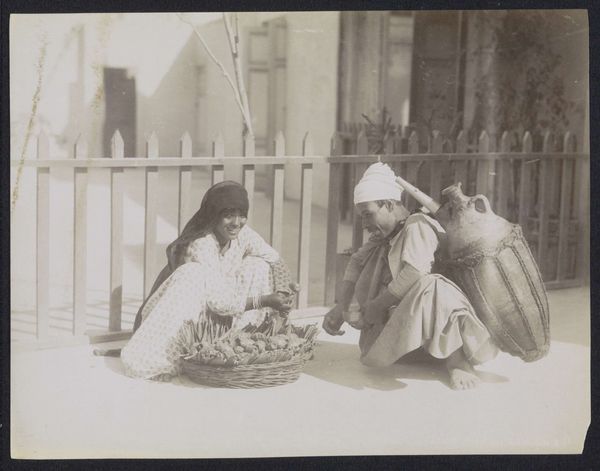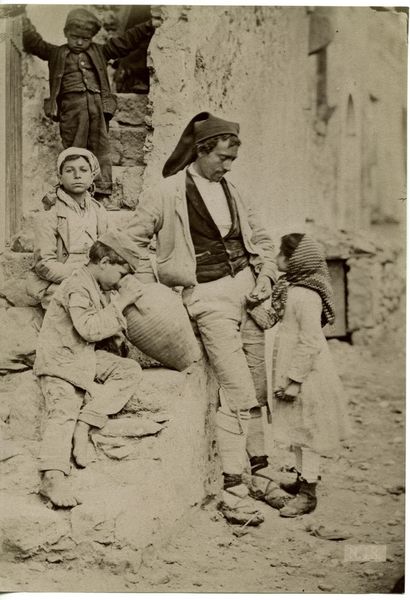
print, photography, gelatin-silver-print
#
portrait
#
african-art
# print
#
photography
#
historical photography
#
orientalism
#
gelatin-silver-print
Dimensions: height 118 mm, width 160 mm
Copyright: Rijks Museum: Open Domain
Editor: This is a photograph entitled "Portret van maraboet Taïeb ben el hadj Bachir en zijn zoon," taken before 1900 by Marotte, using the gelatin silver print process. The subjects' calm gazes really strike me. What do you see in this piece? Curator: This portrait offers a window into the complexities of representation within the context of Orientalism. It's crucial to acknowledge that photography during this period often served colonial agendas, exoticizing and othering the cultures it depicted. How do you think this photograph participates in or resists such dynamics? Editor: I hadn't considered the colonial lens. It seems almost… intimate, but maybe that's just a performance for the camera. I am uncertain how to reconcile my first reading with this. Curator: Indeed, intimacy can be a deliberate construction. Let’s consider the setting, the clothing, the gaze of the subjects. How might these elements contribute to or challenge prevailing European notions about North African identity and spirituality? The son looking at his father indicates intergenerational knowledge transfer. Is the gaze directed toward us as witnesses or a performance? Editor: It’s a lot to unpack. The clothing could signify religious authority, but also poverty. Is the father reading? And their direct gazes confront the viewer directly… They challenge us to look beyond stereotypes, perhaps? Curator: Precisely. And, who was the photographer? Their position and intentions are not neutral either, especially in terms of framing cultural heritage, in order to establish or dissolve societal power. Thinking critically about these dynamics enables us to have a richer understanding of the photograph and its historical legacy. Editor: It's been fascinating to look beyond the surface and to start thinking about the power dynamics inherent in image making. Curator: Indeed. Art offers such opportunity. Now we both will remember this image's inherent sociohistorical message.
Comments
No comments
Be the first to comment and join the conversation on the ultimate creative platform.
